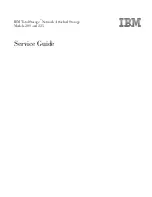
co
M
.sat
ISDN Basic
created: page:
file:
16/01/09
50
coMsat ISDN Basic Manual V2.7.doc
Note Protection Mark according to DIN 34!
In router mode, a distinction of internal numbers and external numbers that may start
with the same digits is needed. Therefore it is possible to distinguish these numbers
by length by setting a routing for “1?,2?” to PBX. This entry has precedence if a
called party number has exactly two digits.
There are two possibilities to execute hold/retrieve and call transfer. The ISDN Basic
can handle the functions internally, or it can issue commands on the ISDN which
activate the functions in the net, i.e. externally. The type of execution is selected by
the two options “
Use ISDN HOLD…
” and “
Use ISDN ECT…
”. Activated options
select external, inactive options select internal execution.
The internal operation has the advantage that it always works, independantly of the
network. The disadvantage is that the B channel of a held call remains occupied. If
external execution is used, the B channel is free to be used by another call, but not
all NT connections, especially of PBXs, support these so called supplementary
services. Then it is necessary to select internal operation.
An external transfer is only possible if external hold was used. External hold and
internal transfer is possible (although not possible on every NT), but causes both B
channels to be occupied after the transfer. If one of these B channels is occupied by
another call, the transfer is not possible.
The selection of internal or external execution only influences the operation on the
TE port. On the NT port, the connected TE chooses to use the ISDN supplementary
service functions or the DTMF tones.
3.3.12.3 Call
Hold
During an active call, dialling the configured hold request digit(s) causes the audio
connection to be disconnected. The held user gets a hold tone or announcement
(march root tone / calling announcement for outgoing call) while the holding user
hears a dial tone or announcement. The user who has invoked the hold function now
is able to dial any other number, i.e. an internal or external one. This number is
dialled using DTMF tones. During dialling, it is not possible to retrieve the held call,
because the retrieve digit would be evaluated as called party number. Only if the new
called number is complete and the call proceeds, it is possible to hold (again),
retrieve or transfer a call.
When there is a mistake during dialling, terminate dialling by use of the ‘#’ character
and hold it again to repeat dialling. It is not necessary to retrieve the held call before
holding it again, but it is of course possible (e.g. to notify the calling person).
If the held user is connected via GSM, the call is held using the GSM hold service.
The GSM user will hear the network specific call held announcement. If the holding
party calls another GSM number, this new call uses the same GSM channel that was
used by the first call. This ensures that the second channel is still available for other
calls and it also allows to connect the two GSM users inside the GSM network on call
transfer without occupying any of the gateway’s GSM channels.
















































